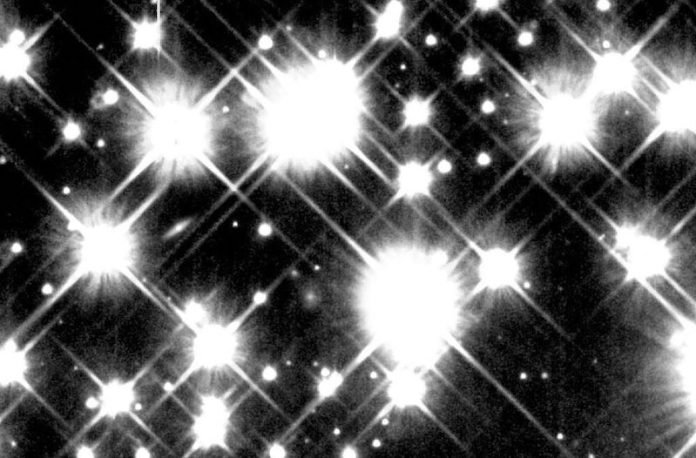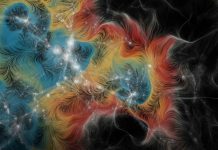
When stars like our sun finish their lifespan, they don’t exactly go out with a bang. Instead, they do something more like a quiet sigh.
But sometimes, if the star is in a pair (we call this a binary system), it can lead to a huge star explosion. This is known as a supernova.
Just recently, scientists saw the radio waves from this sort of event for the first time. This happened in a galaxy far, far away – more than 400 million light-years from us.
They published their findings in Nature on May 17. This discovery gives us some clues about the other star in the pair.
The End of a Star
Stars up to eight times heavier than our sun change a lot when they run out of fuel in their core. They blow off their outer layers, which become colourful gas clouds.
We call these “planetary nebulae”, even though they’re not really about planets at all. What’s left behind is a dense, hot core. This is called a white dwarf.
In about 5 billion years, our own sun will do this too. Then it will slowly cool and fade away. But sometimes, if a white dwarf gets a lot heavier, it can explode.
If it gets more than 1.4 times the mass of our sun, a big explosion called a Type Ia supernova can happen.
The question is, where does this extra weight come from?
We used to think that it came from a bigger star close by, as it could lose some of its gas to the white dwarf. But stars are kind of messy and tend to spill gas everywhere. I
f there was an explosion, this gas would start glowing at radio wavelengths. But even though we’ve been looking for a long time, we’ve never seen this glow with our radio telescopes.
So, our next idea was that maybe these explosions come from two white dwarfs coming together and merging. This wouldn’t leave any gas behind to glow, so it could explain why we haven’t seen any radio signals.
An Unusual Star Explosion
Supernova 2020eyj was found by a telescope in Hawai’i on March 23, 2020. For about seven weeks, it looked like any other Type Ia supernova.
But then it started doing something different. It didn’t get any dimmer for the next five months. It also showed signs of having a lot of helium.
We thought that this supernova might be a special kind where the explosion pushes past gas that only could have come from a companion star.
To check this, we used a group of radio telescopes in the UK. We wanted to see if there was enough shocked gas to give off radio signals. We observed the supernova about 20 months after it exploded.
To our surprise, we found the first-ever clear radio signals from a young Type Ia supernova. This was confirmed by another observation five months later.
This could be proof that not all Type Ia supernovae come from two white dwarfs merging.
Why This Discovery Matters
What’s really interesting about Type Ia supernovae is that they all get to about the same brightness. This suggests that they all explode when they reach a similar size.
This was key to a major discovery by astronomer Brian Schmidt and his team in the late 1990s.
They used this information to figure out that the universe isn’t slowing down its expansion as we thought it would. In fact, it’s speeding up, thanks to something we now call “dark energy”.
So, these star explosions are really important to understanding our universe. But it’s been bothering scientists that we don’t really know how or when they happen, or why they’re all so similar.
For example, if two white dwarfs merging can be up to almost three times the mass of our sun, why do they all explode with about the same amount of energy?
Our new theory is that Supernova 2020eyj exploded when the white dwarf got just heavy enough from the helium-rich gas it took from its companion star. This could explain why they’re all so similar.
But the question remains why we haven’t seen this radio signal before in any other Type Ia supernova? Maybe we looked too soon after the explosion, or maybe not all companion stars are the same.
However, as our study shows, patience and persistence can pay off. In this case, it helped us listen to the final moments of a distant star.
The study was published in Nature.
Copyright © 2023 Knowridge Science Report. All rights reserved.



